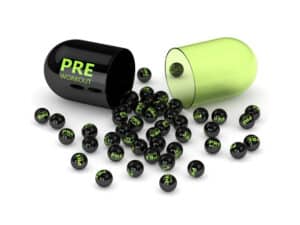The argument about whether you should run when you are sore has been going on since humans started running for recreation. Some people will tell you that you should never go out on sore legs. Others will tell you that running on sore legs is what makes you a stronger runner. The most important thing to figure out first is this; what is sore? How do you differentiate between sore and hurt? Keeping in mind that everyone’s pain tolerance is slightly different, that can be a very difficult question to answer.
In short, the simple answer is yes. However, there are a lot of different factors that go into making the decision on whether you should or shouldn’t run. Things like your pain tolerance, your running experience, and your previous running injuries should all come into consideration. Below are some tips on running with sore legs.
Sore vs Hurt
First, let’s differentiate between sore and hurt. Sore is what you feel after a good workout. You may feel stiff and a little slow, but nothing is broken, torn, pulled, or strained. Sore generally goes away within the first few minutes of starting another run or workout. A good example of sore is some tightness in your upper legs, tight calf muscles, or a little bit of stiffness in your lower back. It is also important to keep in mind that without proper recovery, something that is just sore can very easily become an overuse injury.
Hurt is a completely different story. Hurt is what you feel when you are actually injured. A sprained ankle, a pulled hamstring, a stress fracture, or a torn ligament would all be examples of hurt. Any form of severe, sharp pain should not be ignored! Not only won’t it go away if you try to run through it, quite often you’ll make the injury much worse.
If you are a newer runner, it can be hard to differentiate between sore and hurt. The easiest, safest way to figure out the difference is to go for a very easy, short warm-up run. If the pain is the same, or gets worse, that is hurt. At the very least you should stop running, and depending on how bad it is possibly get it checked by a medical professional. Sore, on the other hand, will generally go away once you get your body warmed back up. Being sore is your body adapting to the new physical stresses you are putting on it.
This is where your experience as a runner will help out. A professional runner has gone through aches and pains so often that they can often tell almost immediately if they are actually injured or not. A newer, more inexperienced runner may have to try to go for a warm-up run to see how they feel.
Most new runners probably err on the side of caution more than they need to, which isn’t necessarily a bad thing. It is always better to be safe than sorry, but there comes a point in your training when you are going to have to run on sore legs. Avoiding creating an injury by running when you are hurt is an important part of being a successful runner, but sooner or later you’ll have to learn what your body can and can’t push through so you can become a stronger runner. If you always wait for your body to get back to 100% after every workout, there will be a lot of skipped runs and workouts, mostly for no reason. It is important to find out what level of discomfort your body is okay with.
If your muscles are sore from some other form of exercise (weight training, squats, cycling, etc) running can help to loosen them up. However, it is important to make sure that you aren’t actually making things worse by running when you are nursing an actual injury, even if it is from another sport or activity.

Pain Tolerance
Your pain tolerance is something that a lot of runners don’t take into account often enough. Every single person’s pain tolerance is different, so what might be a very sore injury to one person could just be a minor annoyance to someone else. This is why knowing roughly how high your pain tolerance is is incredibly important. Someone with a very high pain tolerance might think they are just a little sore. However, because they don’t experience pain quite the same way as someone with a low pain tolerance, they may think they’re okay and push through the injury. This can often make things much, much worse.
If you have a very low pain tolerance, it can be easy to cancel runs and workouts because you’re too sore. This isn’t necessarily a bad thing at first, but once you start to skip too many runs or workouts, your training will suffer and you won’t get out of it what you were hoping to. It is very important for newer runners to roughly figure out what their pain tolerance is so that it can be factored into decisions regarding injuries.
Previous Injuries
As every runner has experienced at some point in time, injuries are a major part of any physical activity, but especially something as taxing on your body as running is. When trying to figure out if you are too sore to work out or run, it is crucial to consider previous injuries. The last thing you want to do is re-injure a past injury just by trying to push through some soreness.
For example, if you’ve dealt with hamstring injuries in the past, and you feel some tightness in your hamstring, it is best to make sure you get it properly stretched and recovered, rather than possibly making it worse and having to take time off from running to heal.
Getting the Most from your Recovery
Your recovery is an incredibly important aspect of your training. If you aren’t recovering properly, you will never be able to get the absolute best out of your body. Going into your next workout or run fully recovered is the best way to get the most from your training. Despite this, lots of people finish their workout or run and then continue on with their days, skipping a cool down and recovery period.
What you do after a run or workout can have as much or more to do with how you feel after as the workout does. A proper recovery with some stretches, foam rolling, scraping, and icing will ensure that your body can recover quickly and as strongly as possible. Depending on how hard of a workout it was, you may be able to get away with some light stretching, or you may need to do all of the recovery methods listed above if it was a really hard workout.
It is also important to remember about DOMS (Delayed Onset Muscle Soreness) too, and you may feel great after a run and skip your cooldown. DOMS can kick in a day or two after a good workout, so just because you feel great after your run, don’t skip your post-run stretching routine!
If you have access to it, an ice bath is an incredible recovery tool after a hard workout. Not only can it help out with decreasing muscle soreness and inflammation, but it can also help strengthen your immune system which is very important when pushing your body to its limits.
Frequently Asked Questions
What muscles should be sore after a run?
This will depend on how long and hard your run was. A short easy run may just leave you with a little bit of stiffness in your legs, but nothing actually sore. If you’re doing a long run, speed work, or hill workout, you can expect to be a bit sore in your upper and lower legs as your body is adapting to the increased physical stress.
Because of the constant pounding that a runner’s knees take, knee pain is something that should never be ignored. A little bit of stiffness and slight soreness is to be expected when starting out, or heavily increasing your mileage, but anything that could be described as “pain” should be looked at by a medical professional to stop it from getting any worse.
Tightness anywhere should be taken into account before running, but running with tight calves can be especially bad. When your calves are too tight, runners will change their stride without realizing it. This can lead to injuries in your calves, and other muscles around them as well. Pushing too hard through this can turn tight muscles into much more serious injuries.
Unfortunately, this does happen from time to time, and then you have a choice to make. Some runners choose to not start the race, and others decide to show up and walk the race so they can still experience race day and collect their medals. Check the cutoff time for your race, and using the pace chart calculator, you can figure out if there is enough time to walk the full race before the cutoff time. A lot of races have a long enough cutoff time that it is entirely feasible to walk the whole course in time.
Conclusion
Knowing the difference between sore and hurt can make a huge difference in a runner’s ability to stay healthy, and miss as few training sessions as possible. Missing as few training sessions as possible is paramount to getting the most out of your training.
Knowing that you’re able to push through a little bit of soreness will make you a much better, stronger runner in the long end. It will also help to make your training more enjoyable to know that you can make some of the soreness go away by going out for another run.














































